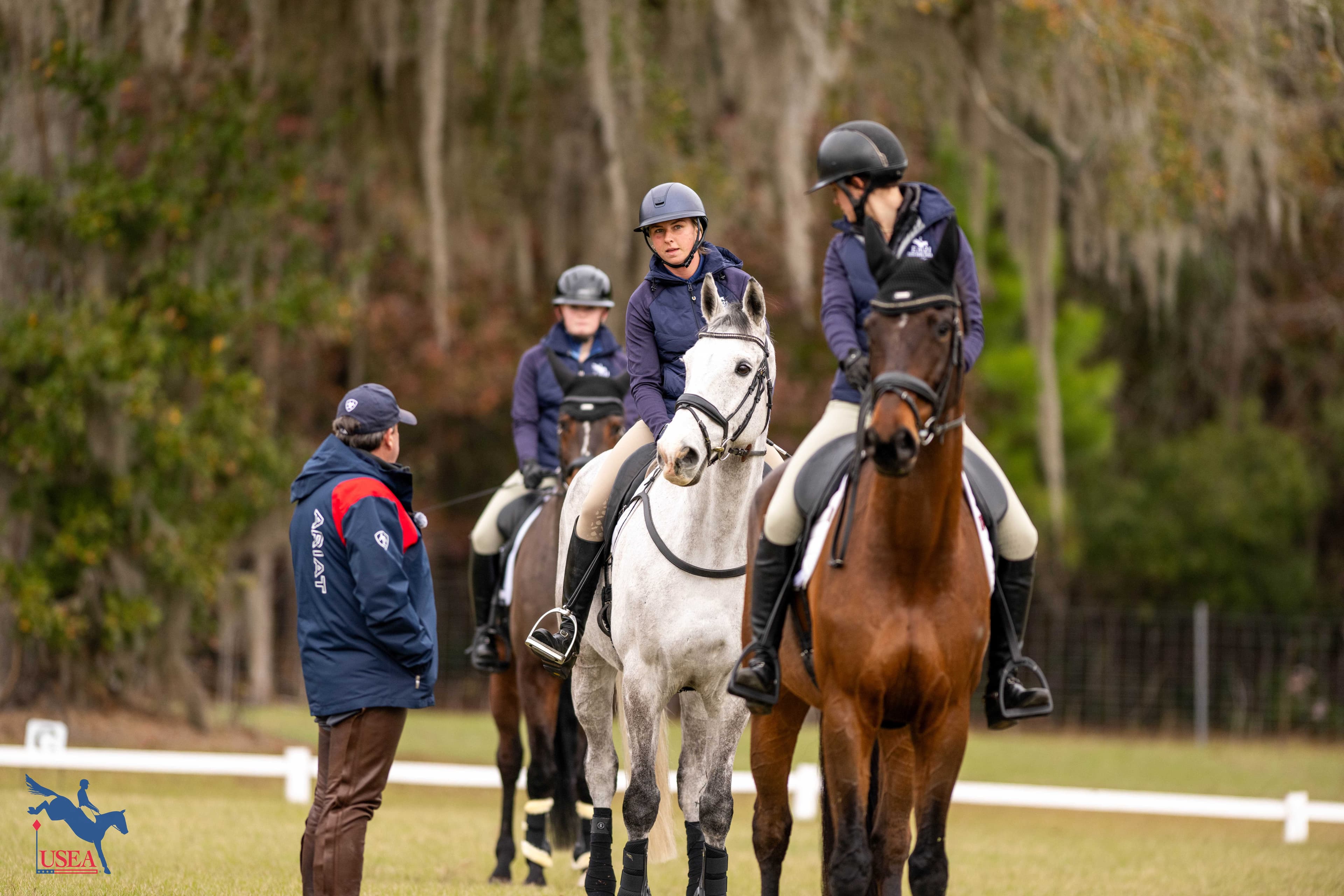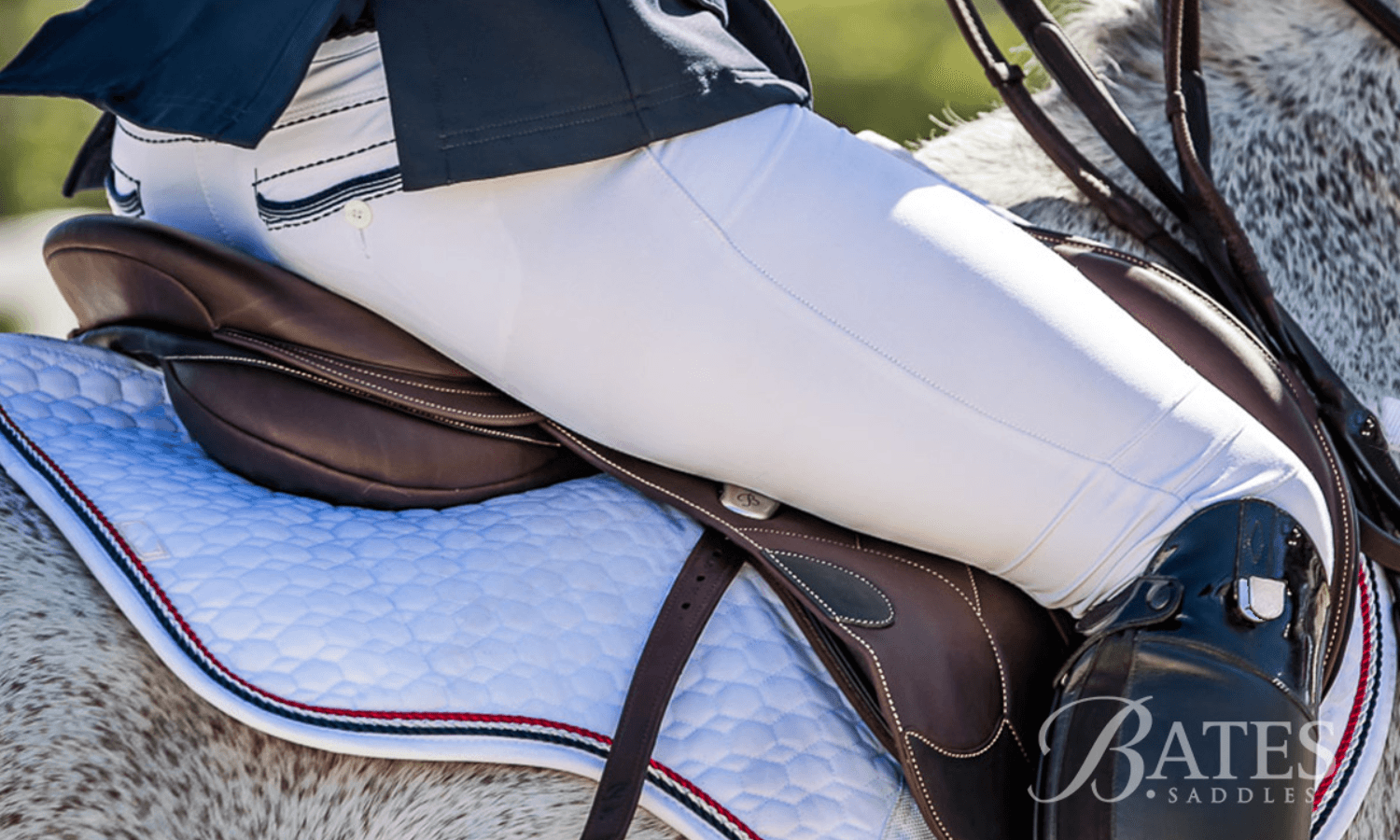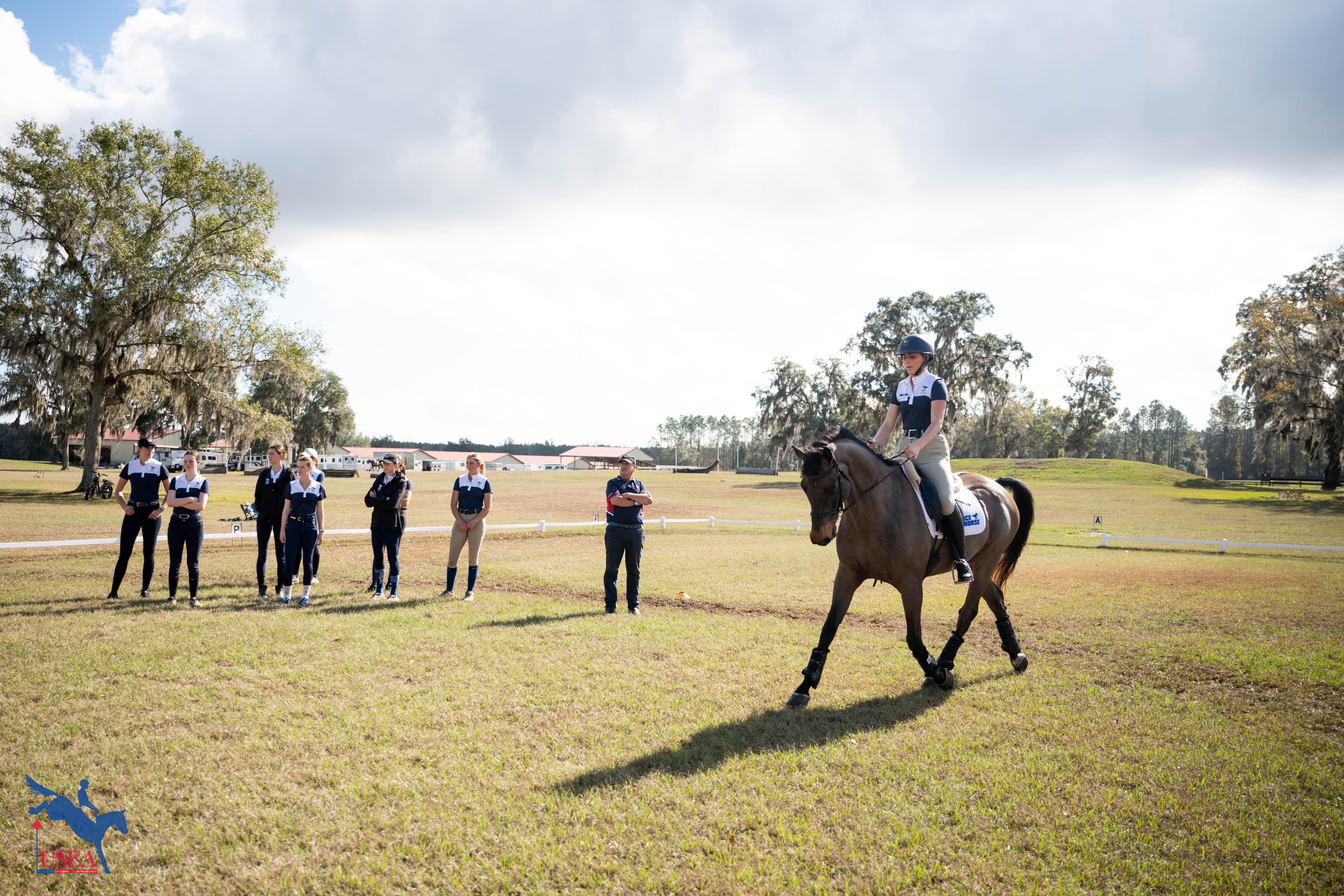Building a Stronger Young Event Horse Through Transitions with Jenny Caras

This article was originally published to the USEA website on November 13, 2017. The Young and Future Event Horse article series was provided through a partnership between Mythic Landing Enterprises, LLC. and the USEA.
When training a young event horse, you should put a lot of emphasis on building strength and muscle so your horse can properly do their job. Using your time wisely and efficiently while on your horse is important and it helps you as the rider have a plan and a goal to stick to during your ride. Jenny Caras walks us through an exercise she loves to incorporate into her daily routine that she has success with on her horses that have just been broke all the way up to her Advanced-level mounts.
This exercise is very simple and very easy to implement at home, whether you’re in the ring or out in the field. Depending on the level of your horse, you can do this exercise in a variety of ways. To start, put your horse on a 20-meter circle. Work on the rhythm of your walk, and asking your horse to relax into the contact. Depending on how far you are with your horse’s training will determine your warm-up. For a horse just beginning their training, every time you cross centerline on your circle, come down to a halt, and then once they’ve stood still for a second or two, ask them to walk on again. The rider’s focus should be on the conscious use of your seat and leg aides – not your rein aides – in these downward transitions. If your entire ride is just walk to halt transitions, working on keeping the impulsion into the halt and a soft connection, that is completely ok! Taking baby steps to do an exercise correctly will pay off in the long run.
Once you’re ready to incorporate some trot work, be sure to keep asking for a transition on the centerline. This gives you a point of reference to constantly go back to. Again, Caras makes sure to note that you’re looking for your horse to continue moving forward into the downward transition.
“Ultimately, I want my horse to take the bit forward into the contact as I close my leg and seat. When I start to feel that, I know my horse is correctly responding to my aids,” Caras explains.
When you feel that your horse is ready to try this exercise with some canter involved, still keep your point of reference on the two centerlines, but also, don’t be too picky about that at first. Especially with Thoroughbreds, the canter is a gait that they will struggle with on a circle. It may take a half of a circle to establish the canter on the correct lead. Make sure to still ask for transitions, but don’t worry if it’s exactly on the center line at first.
As time goes on, this exercise really allows you as the rider to gauge your horse’s progress. If one week it took you half of a circle to establish the canter, and the next week it only takes a quarter of a circle, and then three strides, that’s amazing! Keep note of your progress and don’t settle until your horse makes those transitions on the centerline every time, as well as every time you go back to this exercise.
This exercise is great for both horse and rider. For the rider, stay disciplined in your position and your aids. Even if your horse is tense and against the bit, resist the temptation to go to your hands. In order for your horse to truly use their back and hind end, they need to allow their hind end to come underneath them into the transition. Pulling on the reins only allows your horse to brace and get hollow. Taking the necessary time to teach your horse the correct way also teaches the rider the correct way. Practicing this exercise over and over will make riding correctly your natural way and you won’t need to keep to constantly reminding yourself.
If your horse also tends to be distracted or gets bored easily, incorporate this exercise into your everyday ride to get them paying attention and ready to work. No matter if you’re flatting or jumping, this is a great warm-up exercise for whatever your plan is that day.
About Jenny Caras
Caras grew up riding horses and has had impressive finishes at the start of her young career at the North American Junior and Young Rider Championships in 2010 and 2013. Caras has been chosen as one of ten top young riders in the United States for the 2017 USEF Eventing 25 Training List for the five consecutive years. Caras recently launched her own business, Caras Eventing International after working and riding for Phillip Dutton for three years. She looks forward to developing her business and continuing to build a strong string of top level event horses. To learn more about Jenny and her program, please visit her website.














